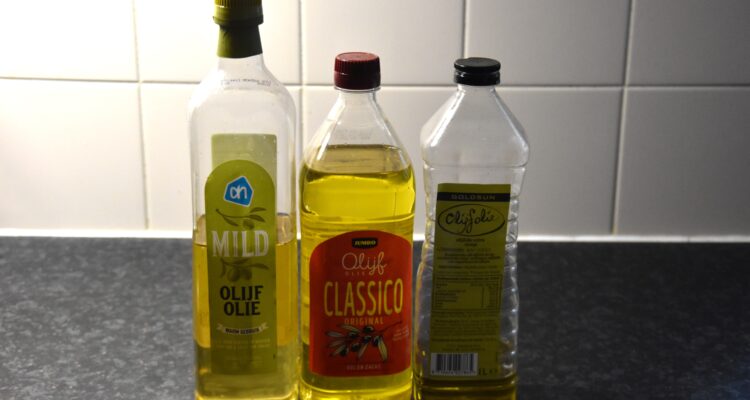Let’s talk about olive oil. I use it almost daily. But what exactly is the difference between classic, virgin and extra virgin? I’ve already researched pasteurized eggs vs unpasteurized eggs and sour cream vs crème fraîche. Now I’ve looked for answers on olive oil.
How Is Olive Oil Prepared
Olive oil is an organic liquid fat obtained from pressing whole olives and extracting the oil from them. It’s mainly used for food preparation, either for frying foods or as a salad dressing. Usage of this oil goes back a long way. It can be traced back in sources to 4000 years BC.
The oil has a green or yellow color, this can be in different shades. The color doesn’t say anything about the quality, only about the kind of olive tree it comes from. The main ingredient of olive oil is oleic acid. Next to that it contains fatty acids of palmitic acid and linoleic acid.
Olives are mainly being harvested from November till January. The olives will then be washed and grinded to a paste. There are two ways to obtain oil from this paste. One way is through cold press extraction. The paste is kneaded and pressed and an oil-water mixture comes out. There is more than one pressing, so people will speak of first pressed, second pressed. The second way is through centrifugation in a mill. The water and oil come out separately. The second way is faster for oil production.
The Different Types of Olive Oil
Now we know how the oil is produced, what types of olive oil are there?
There’s olive oil extra virgin, virgin, regular and refined. There’s a 5th one, but that one isn’t fit for human consumption. We’ll no further discuss that one.

The pureness of the oil is linked to the level of free acidity. Extra virgin can’t have more than 0.8% free acidity. This oil is judged as having a superior flavor and odor. It’s made through cold mechanical extraction. No refining methods or solvents are used.
Virgin is seen as a lesser grade of oil. It can have up to 2.0% of free acidity. It should still have a good flavor and odor.
Regular is a mix of virgin and refined oils. It has to contain less than 1.0% of free acidity. It’s mechanically produced.
Refined oil is a virgin oil which has been refined through usage of charcoal and several other physical and chemical filters. It has to contain less than 0.3% of free acidity.
When to Use Which
So when do you use which?
Extra virgin is best used cold. It’s poured over a salad as dressing, or part of the salad dressing or any other cold usage in food. The flavor is stronger when it’s not heated, giving more flavor to the dish. Since extra virgin has a lower smoke point compared to other oils, it’s less suitable for cooking and unsuitable for (deep-)frying.

The lighter the olive oil, the higher the smoke point. Hence use virgin, regular or refined oil for cooking, such as in this Easy Lasagna.
So That’s All About Olive Oil
You now know how it’s produced, which different types there are and when to use which.
